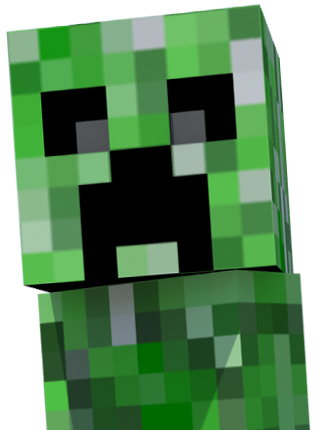



From the Mojang, the Swedish company's (recently bought by Microsoft) own site, Minecraft is:
... a game about breaking and placing blocks. At first, people built structures to protect against nocturnal monsters, but as the game grew players worked together to create wonderful, imaginative things. It can also be about adventuring with friends or watching the sun rise over a blocky ocean. It's pretty. Brave players battle terrible things in The Nether, which is more scary than pretty. You can also visit a land of mushrooms if it sounds more like your cup of tea.
That's perhaps a summary of a Minecraft highlight reel. But the game is so much more, and quite different from most games from large developers. Minecraft is a "sandbox" game, that essentially provides a basic virtual world that players can then build on top of. To "build" the world, players take basic building blocks such as ore, sand, wood, and stone, and combine these elements to make more complicated elements. From these complicated elements they can then build some pretty awesome stuff (such as a scale model of denmark, or of Westeros, the land from Game of Thrones). Basically, Minecraft is a hollow world through which players can interact and build what they will, often promoting creativity, literacy, and collaboration. Check out the following links on Minecraft basics.
Even with the benign, largely lego-like game play, there are still a number of legitimate worries that parents have about their children playing Minecraft. With the vibrant community of YouTube video-posting, guide-writing crafters, as well as the propensity for in-game interaction you can't always monitor, it's often hard to tell if your child is in a safe place online. The good news is that there are a set of tools to help parents protect their children in their Minecraft experience. Most prominently, there's an official guide put out by scholastic, an app that helps you tell which videos are appropriate, and family-friendly servers.
Creative mode is perhaps the least "video game"-seeming mode, leaving players with easily gathered materials, no threat at night, and the ability to fly. This allows you to focus on one of the most central aspects of Minecraft: creating! This mode is available on all devices that an play Minecraft (computers, consoles, smartphones), as well as on the free version available on the Minecraft site. This mode essentially turns the game into a giant virtual Lego sandbox. It's a great opportunity to jump into the game with your kids. Choose a monument to recreate, build a castle, use levers and other mechanisms, or paint a picture with blocks. If you aren't comfortable with your kids playing multiplayer with others, or jumping into the more "gaming" aspects of the game, this might be a good mode to play with them. This game mode is also used on multiplayer servers to play sports in, like the user-created game Spleef. Here are some links to help you and your child get the most out of creative mode.
This game mode, originally called "Dungeons and Levers" is focused on solving puzzles, and using map restrictions to make adventures a challenge. Restrictions of the game mode include only being able to break blocks with the proper type of tools, making players play according to the constraints of map makers. Adventure mode isn't as constructive as creation mode, but offers educational and social benefits to young players through supplementary material such as guides, forums, and in-game cooperation for survival. If your kids get bored in creation mode, adventure mode can be a great, slightly more action packed and problem solving experience. Here are some links to help you or your child make the most out of Minecraft's adventure mode.
Survival mode can be played in single and multiplayer, and centers around gathering resources, building shelter, exploring to find a number of objects, and managing your players health. Though this type of game play is marketed as having no definite goals, in a way defeating a boss character known as the "Ender Dragon" serves as a stopping place. In defeating this boss, however, a new dimension for players to explore is opened.
All players are contributors to the Minecraft community in some way. But there are ways to contribute even more, and many of them are quite educational. Learning to mod (create modifications for the game, such as new maps, looks, or characters) oftentimes forces players to learn about the technical underpinnings that allow the game to run. There's even a mod that teaches players how to code through the game. While there are endless hours of education and fun to be had through a basic Minecraft experience, for those who want to dive in, modding and engagement with the community can provide more advanced reading, writing, and coding experience, along with utilizing players imaginations!
For over a decade, researchers have been studying the effects of video games on our brains. Games can motivate us, and can be taken too far. There's a growing body of evidence that certain types of games can be used very productively for educational goals. Check out some of the following papers on video games and education.
As Minecraft in particular has become an increasingly large phenomenon amongst current school-aged children, communities of parents dealing with the Minecraft generation have emerged. Below are a few forums where parents can talk about their Minecraft-playing children, as well as some Minecraft specific articles on the pros and cons of the game.